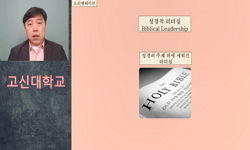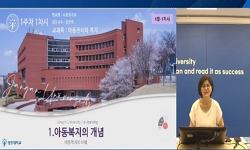In Hua-yan School, the ocean-reflection meditation and the flower-ornament meditation are most important among various meditations in Avataṃsaka Sūtra. The ocean-reflection meditation is the background meditation representing Avataṃsaka Sūtra an...
http://chineseinput.net/에서 pinyin(병음)방식으로 중국어를 변환할 수 있습니다.
변환된 중국어를 복사하여 사용하시면 됩니다.
- 中文 을 입력하시려면 zhongwen을 입력하시고 space를누르시면됩니다.
- 北京 을 입력하시려면 beijing을 입력하시고 space를 누르시면 됩니다.
부가정보
다국어 초록 (Multilingual Abstract)
As the results of investigations into the interpretations on the flower-ornament meditation in the commentaries on Avataṃsaka Sūtra of Hua-yan masters such as Chihyan, Fazang, and Chengguan, the flower-ornament meditation is the Buddha’s meditation emerging in both cause and effect, and it is the bodhisattva’s meditation signalling the achievement of the stage of attainment as bodhisattva-practice. That is, the flower-ornament meditation is the key in two states. Also, in the practice criteria, the flower-ornament meditation is understood as the practice surpassing the stage of practice, that is, the practice of unhindered, complete freedom without any hindrance. Whereas the flower-ornament meditation in Avataṃsaka Sūtra represents mainly the practice of bodhisattva and the achievement of practice, apologetic analyses on Dependent origination of the Dharma realm in Hua-yan vipaśyanā are given to the flower-ornament meditation. The flower-ornament meditation, emphasized as the practice of unhindered, complete freedom without any hindrance, can be interpreted as vipaśyanā on the dharma world of shih-shih-wu-ai. Also, the emphasis on practice in the flower-ornament meditation has been discussed to show non-duality of substance and function. Hence, the flower ornament meditation of Hua-yan School provides thorough theoretical basis on bodhisattva-practice. At the same time, the flower ornament meditation is the practical expedient for understanding and acquiring the Dharma realm of Hua-yan School. In such viewpoint, the flower ornament meditation portrays behaviors in the reality.
In Hua-yan School, the ocean-reflection meditation and the flower-ornament meditation are most important among various meditations in Avataṃsaka Sūtra. The ocean-reflection meditation is the background meditation representing Avataṃsaka Sūtra and corresponds to the basis of Hua-yan doctrinal teachings, so that the ocean-reflection meditation can be located on the top. The flower-ornament meditation has been mainly mentioned as the practice of bodhisattva in relation with the practice of vipaśyanā. However, traditional studies have mainly explained the flower-ornament meditation only in the viewpoint of Hua-yan doctrinal teachings, so the true aspects of the practice and the practical meaning included deeply in the flower-ornament meditation have not been fully understood, instead they have been quite neglected.
As the results of investigations into the interpretations on the flower-ornament meditation in the commentaries on Avataṃsaka Sūtra of Hua-yan masters such as Chihyan, Fazang, and Chengguan, the flower-ornament meditation is the Buddha’s meditation emerging in both cause and effect, and it is the bodhisattva’s meditation signalling the achievement of the stage of attainment as bodhisattva-practice. That is, the flower-ornament meditation is the key in two states. Also, in the practice criteria, the flower-ornament meditation is understood as the practice surpassing the stage of practice, that is, the practice of unhindered, complete freedom without any hindrance. Whereas the flower-ornament meditation in Avataṃsaka Sūtra represents mainly the practice of bodhisattva and the achievement of practice, apologetic analyses on Dependent origination of the Dharma realm in Hua-yan vipaśyanā are given to the flower-ornament meditation. The flower-ornament meditation, emphasized as the practice of unhindered, complete freedom without any hindrance, can be interpreted as vipaśyanā on the dharma world of shih-shih-wu-ai. Also, the emphasis on practice in the flower-ornament meditation has been discussed to show non-duality of substance and function. Hence, the flower ornament meditation of Hua-yan School provides thorough theoretical basis on bodhisattva-practice. At the same time, the flower ornament meditation is the practical expedient for understanding and acquiring the Dharma realm of Hua-yan School. In such viewpoint, the flower ornament meditation portrays behaviors in the reality.
국문 초록 (Abstract)
지엄(智儼), 법장(法藏), 징관(澄觀) 등 화엄교학자들이 『화엄경』주석서에서 화엄삼매를 해석하는 내용을 살펴본 결과, 화엄삼매는 인과(因果)를 통틀어 나타내는 삼매로서 불(佛)의 삼매이자, 보살의 인행(因行)으로써 과상(果相)을 성취하여 나타내는 보살의 삼매이기도 하여 두 가지 지위에 모두 통한다. 업용의 측면에서 화엄삼매는 화엄의 법을 설함과 화엄의 행을 나타내고 있어 법에 대한 이해와 실천을 아우르고 있다.
『화엄경』에서의 화엄삼매가 주로 보살의 수행과 수행의 성취를 나타내고 있는데 반해, 관행문에서는 화엄삼매에 법계연기(法界緣起)에 대한 규명과 교학적인 해석들이 부여된다. 하지만 이와 같은 연기에 대한 바른 이해[解]의 강조는 실천 수행[行]이 올바른 관점이나 바른 이해 위에 이루어지는 실천이라는 것을 역설하기 위함으로 볼 수 있다. 법계연기에 대한 이해와 관찰에 의해 화엄삼매에 도달할 수 있으며 또한 화엄삼매를 통해 중생을 위한 지혜와 자비의 행이 펼쳐지며 더 큰 법계연기의 세계에 들어가기 때문이다.
즉, 화엄종은 화엄삼매를 통해 보살의 실천에 대한 화엄교학의 이론적 근거를 제공함과 동시에 화엄의 법계를 이해하고 증득할 수 있는 실천적 수단이자 그러한 관점의 실재에서의 행위를 나타내고자 한 것이다.
화엄종(華嚴宗)에서는 『화엄경(華嚴經)』에 나오는 여러 삼매 가운데 해인삼매(海印三昧)와 화엄삼매(華嚴三昧)를 중시한다. 해인삼매는 『화엄경』을 관통하는 총정(總定)이자 화엄교학...
화엄종(華嚴宗)에서는 『화엄경(華嚴經)』에 나오는 여러 삼매 가운데 해인삼매(海印三昧)와 화엄삼매(華嚴三昧)를 중시한다. 해인삼매는 『화엄경』을 관통하는 총정(總定)이자 화엄교학의 토대로 자리매김하며 그 위상이 강조되고, 화엄삼매는 보살의 실천으로서 관행과 관련하여 주로 언급된다. 그런데 삼매가 삼매인 이상 수행이라는 맥락과 밀접한 관련이 있음에도 불구하고 경전의 핵심내용을 담아내는 과정에서 또, 교학적인 해석이 가미되며 수행의 실천적인 측면들이 희석된 경향이 있다. 특히 관행문에서 다루어지는 화엄삼매에서조차 화엄삼매자체에 담겨진 수행과 실천적 의미는 드러나지 못하고 간과된 측면이 있다.
지엄(智儼), 법장(法藏), 징관(澄觀) 등 화엄교학자들이 『화엄경』주석서에서 화엄삼매를 해석하는 내용을 살펴본 결과, 화엄삼매는 인과(因果)를 통틀어 나타내는 삼매로서 불(佛)의 삼매이자, 보살의 인행(因行)으로써 과상(果相)을 성취하여 나타내는 보살의 삼매이기도 하여 두 가지 지위에 모두 통한다. 업용의 측면에서 화엄삼매는 화엄의 법을 설함과 화엄의 행을 나타내고 있어 법에 대한 이해와 실천을 아우르고 있다.
『화엄경』에서의 화엄삼매가 주로 보살의 수행과 수행의 성취를 나타내고 있는데 반해, 관행문에서는 화엄삼매에 법계연기(法界緣起)에 대한 규명과 교학적인 해석들이 부여된다. 하지만 이와 같은 연기에 대한 바른 이해[解]의 강조는 실천 수행[行]이 올바른 관점이나 바른 이해 위에 이루어지는 실천이라는 것을 역설하기 위함으로 볼 수 있다. 법계연기에 대한 이해와 관찰에 의해 화엄삼매에 도달할 수 있으며 또한 화엄삼매를 통해 중생을 위한 지혜와 자비의 행이 펼쳐지며 더 큰 법계연기의 세계에 들어가기 때문이다.
즉, 화엄종은 화엄삼매를 통해 보살의 실천에 대한 화엄교학의 이론적 근거를 제공함과 동시에 화엄의 법계를 이해하고 증득할 수 있는 실천적 수단이자 그러한 관점의 실재에서의 행위를 나타내고자 한 것이다.
참고문헌 (Reference)
1 학담, "화엄종관행문" 조계종출판사 3-681, 2001
2 해주, "화엄의 세계" 민족사 15-368, 1998
3 권탄준, "화엄의 삼매와 무애행의 연관성" 한국불교연구원 (33) : 131-158, 2010
4 카마다 시게오, "화엄의 사상" 고려원 11-204, 1987
5 프란시스 쿡, "화엄불교의 세계" 불교시대사 5-224, 1994
6 계환, "현수 법장 연구" 운주사 5-252, 2011
7 아베쵸이치, "인도의 선, 중국의 선" 민족사 15-284, 1991
8 신규탁, "규봉종밀과 법성교학" 올리브그린 5-743, 2014
9 淨源, "華嚴還源觀疏鈔補解(卍新續藏 58)"
10 法藏, "華嚴遊心法界記(大正藏 45)"
1 학담, "화엄종관행문" 조계종출판사 3-681, 2001
2 해주, "화엄의 세계" 민족사 15-368, 1998
3 권탄준, "화엄의 삼매와 무애행의 연관성" 한국불교연구원 (33) : 131-158, 2010
4 카마다 시게오, "화엄의 사상" 고려원 11-204, 1987
5 프란시스 쿡, "화엄불교의 세계" 불교시대사 5-224, 1994
6 계환, "현수 법장 연구" 운주사 5-252, 2011
7 아베쵸이치, "인도의 선, 중국의 선" 민족사 15-284, 1991
8 신규탁, "규봉종밀과 법성교학" 올리브그린 5-743, 2014
9 淨源, "華嚴還源觀疏鈔補解(卍新續藏 58)"
10 法藏, "華嚴遊心法界記(大正藏 45)"
11 陳永裕, "華嚴觀法の基礎的硏究" 民昌文化社 14-517, 1995
12 末綱恕一, "華嚴經의 世界" 한국불교연구원 7-238, 1985
13 澄觀, "華嚴經行願品疏(卍新續藏 5)"
14 法藏, "華嚴經探玄記(大正藏 35)"
15 法藏, "華嚴發菩提心章(大正藏 45)"
16 澄觀, "華嚴法界玄鏡(大正藏 45)"
17 石井公成, "華嚴宗の觀行文獻に見える禪宗批判" 松ヶ岡文庫 (17) : 47-61, 2003
18 杜順, "華嚴五教止觀(大正藏 45)"
19 최연식, "文超의 著述과 元曉 華嚴思想의 관련성에 대한 검토" 한국사상사학회 (39) : 1-26, 2011
20 澄觀, "大方廣佛華嚴經隨疏演義鈔(大正藏 36)"
21 澄觀, "大方廣佛華嚴經疏(大正藏 35)"
22 智儼, "大方廣佛華嚴經搜玄分齊通智方軌(大正藏 35)"
23 "大方廣佛華嚴經(大正藏 9)"
24 法藏, "修華嚴奧旨妄盡還源觀(大正藏 45)"
25 "佛說無量壽經(大正藏 12)"
26 志磐, "佛祖統紀(大正藏 49)"
27 鍵主良敬, "仏教における三昧思想" 平樂寺書店 175-192, 1979
28 鎌田茂雄, "中國佛敎思想史硏究" 春秋社 357-378, 1969
29 권탄준, "『화엄경』사상의 실천적 연구, In 화엄의 사상과 실천" 한국불교학회 1-16, 2015
30 小林実玄, "『遊心法界記』における 「華厳三昧」について" 印度學佛教學硏究會 26 (26): 600-604, 1975
31 小林実玄, "『行人修道簡邪入正正観法門』(『五教止観』) 「華厳三昧」について" 印度學佛教學硏究會 25 (25): 770-774, 1977
32 小林実玄, "『華厳三昧観』の研究- 法界観に関する法蔵の加説とその周辺" 印度學佛敎學硏究會 24 (24): 324-327, 1975
33 小林実玄, "『探玄記』における 「華厳三昧」の観について" 印度學佛教學硏究會 26 (26): 852-855, 1978
34 신규탁, "‘내가 보는’ 세계의 실상에 대한 화엄교학적 성찰" 동아시아불교문화학회 (20) : 137-156, 2014
동일학술지(권/호) 다른 논문
-
- 한국불교선리연구원
- 김병길
- 2018
- KCI등재
-
- 한국불교선리연구원
- 박재현
- 2018
- KCI등재
-
바르뜨리하리(Bhartṛhari)의 브릿띠삼웃데샤(Vṛttisamuddeśa) ― 검은 참깨(kṛṣṇatila)의 사례 분석을 중심으로 ―
- 한국불교선리연구원
- 박대용
- 2018
- KCI등재
-
- 한국불교선리연구원
- 공만식
- 2018
- KCI등재
분석정보
인용정보 인용지수 설명보기
학술지 이력
| 연월일 | 이력구분 | 이력상세 | 등재구분 |
|---|---|---|---|
| 2028 | 평가예정 | 재인증평가 신청대상 (재인증) | |
| 2022-01-01 | 평가 | 등재학술지 유지 (재인증) |  |
| 2019-01-01 | 평가 | 등재학술지 유지 (계속평가) |  |
| 2016-01-01 | 평가 | 등재학술지 유지 (계속평가) |  |
| 2012-05-14 | 학회명변경 | 한글명 : 재단법인 선학원 부설 한국불교선리연구원 -> 한국불교선리연구원 |  |
| 2012-01-01 | 평가 | 등재학술지 선정 (등재후보2차) |  |
| 2011-01-01 | 평가 | 등재후보 1차 PASS (등재후보1차) |  |
| 2009-01-01 | 평가 | 등재후보학술지 선정 (신규평가) |  |
학술지 인용정보
| 기준연도 | WOS-KCI 통합IF(2년) | KCIF(2년) | KCIF(3년) |
|---|---|---|---|
| 2016 | 0.56 | 0.56 | 0.5 |
| KCIF(4년) | KCIF(5년) | 중심성지수(3년) | 즉시성지수 |
| 0.43 | 0.41 | 1.365 | 0 |




 KISS
KISS







